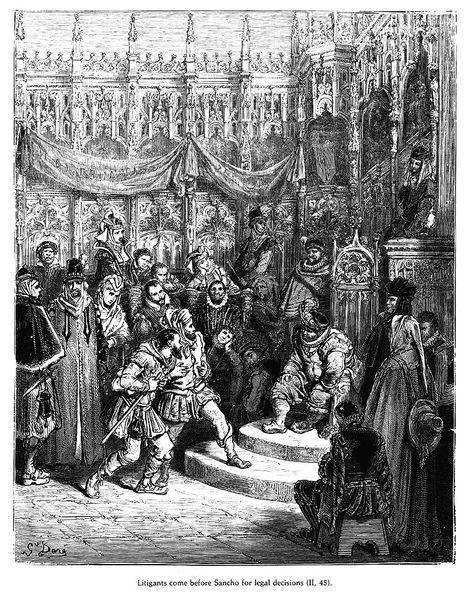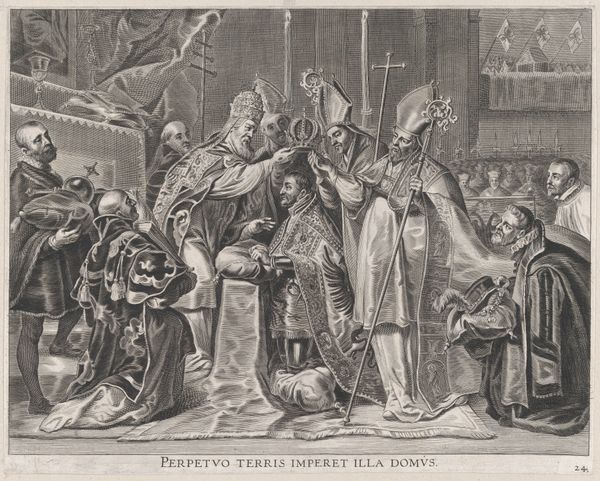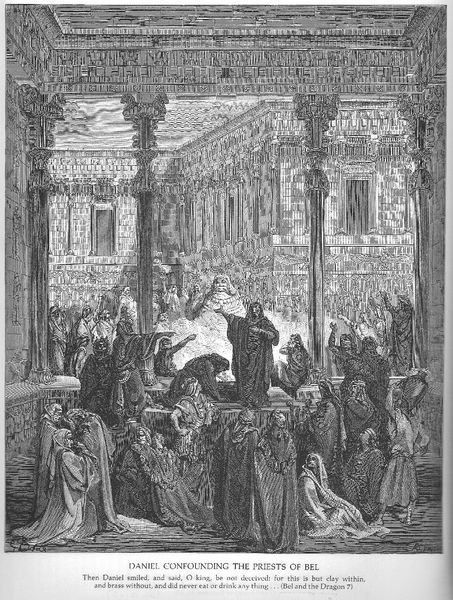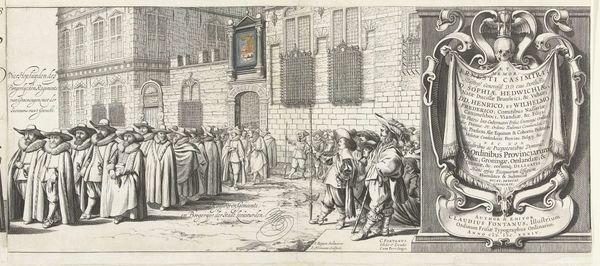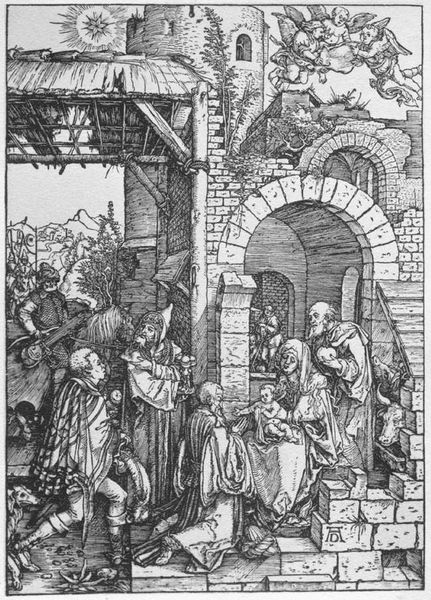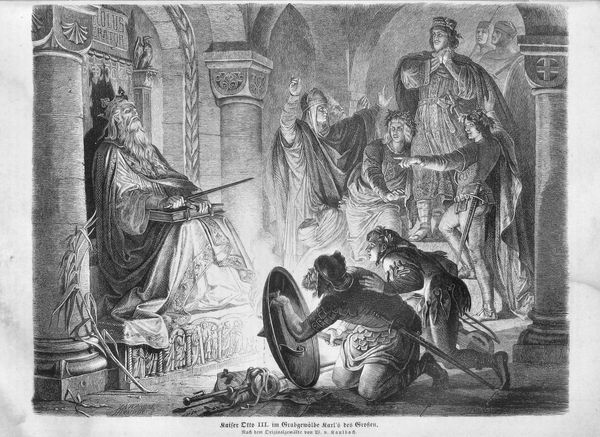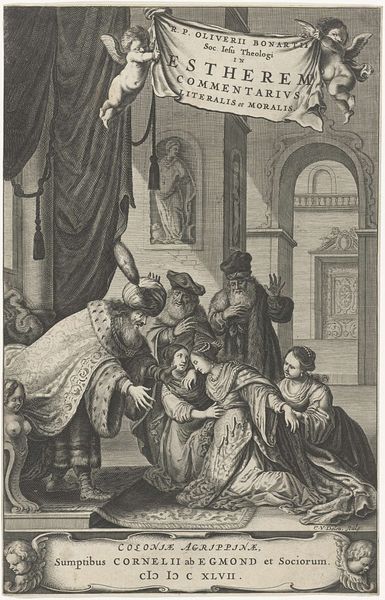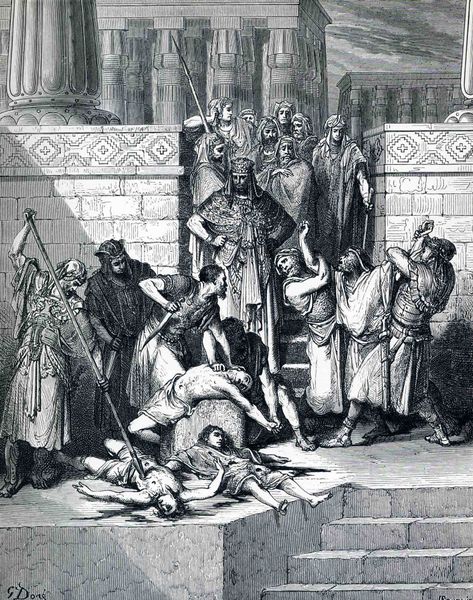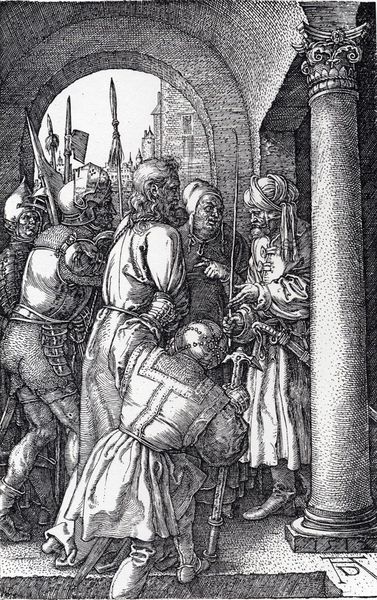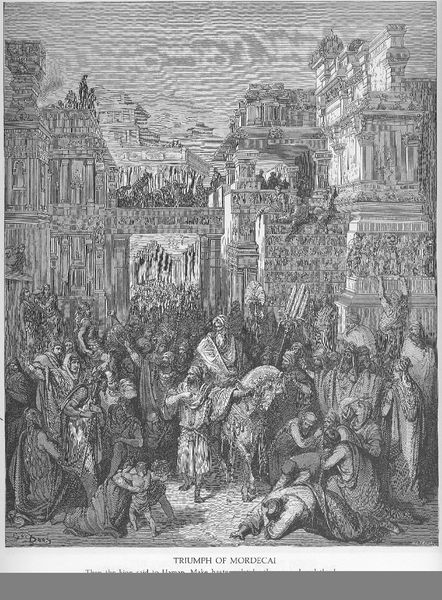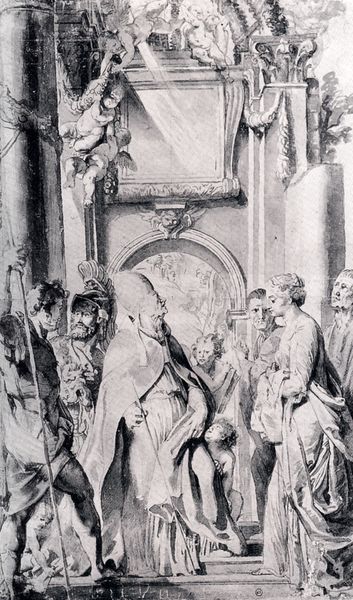
#
quirky sketch
#
pencil sketch
#
holy-places
#
highly detailed
#
famous-people
#
idea generation sketch
#
sketchwork
#
dynamic sketch
#
pen-ink sketch
#
fantasy sketch
#
intricate and detailed
#
initial sketch
Copyright: Public domain
Editor: So this drawing, "Ivan III of Russia" by Konstantin Egorovich Makovsky, from 1869, it looks like it’s done with ink, maybe pencil, it’s very detailed. It’s quite striking in its depiction of power, but also a little unsettling, like there’s a lot of tension in the scene. How do you interpret this work, considering its historical context? Curator: That tension is key, isn’t it? Look at how Makovsky situates Ivan III. He’s elevated, literally and figuratively, but surrounded by figures both subservient and seemingly apprehensive. We need to unpack this moment through the lens of Russian history and power dynamics. Think about Ivan III's role in consolidating Muscovite rule and laying the foundations for the Russian Empire. What does it mean to depict this consolidation at this specific moment, the late 19th century? Editor: So, the date of the drawing itself, 1869, influences the message? Curator: Absolutely. Consider the reform era in Russia at that time. Alexander II was attempting to modernize the country, and there was a great deal of debate about Russia’s national identity and its relationship to its own history, particularly the legacy of autocracy. Makovsky seems to be inviting us to think critically about that legacy, to acknowledge the force it took to create this consolidation, this kind of 'father of the nation.' What about the figures around him? Do you notice a specific focus or representation that reflects society at that time? Editor: I see a lot of different reactions. Some people seem afraid, and some are on the ground seemingly in servitude… that’s the hierarchy right there, plain as day. And the guard near the steps; is he representative of military strength? Curator: Precisely. And how might the ethnic diversity represented within the gathering reflect both the reach and the inherent tensions within this burgeoning empire? Editor: This really shines light on power, not only who has it, but how it's imposed and maintained… The drawing seemed simple at first glance. Now I can really see it represents power, race, gender, and class struggles all at once! Curator: And remember, the act of sketching itself – this being potentially a study for a larger work – also suggests a process of negotiation with history, a sketching out of what a usable past might look like for late 19th-century Russia.
Comments
No comments
Be the first to comment and join the conversation on the ultimate creative platform.
